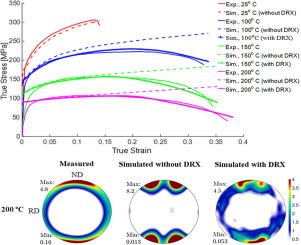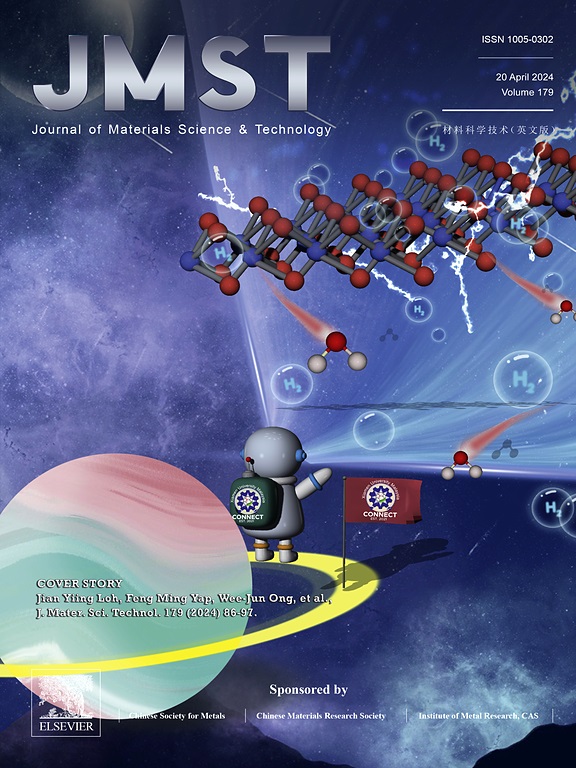Field fluctuations viscoplastic self-consistent crystal plasticity extended for modeling of hexagonal metals: Applications to deformation and recrystallization of alloy AZ31
IF 11.2
1区 材料科学
Q1 MATERIALS SCIENCE, MULTIDISCIPLINARY
引用次数: 0
Abstract
In this paper, a recently developed field-fluctuations viscoplastic self-consistent (FF-VPSC) polycrystal plasticity formulation for cubic metals incorporating grain fragmentation and recrystallization models is extended to the modeling of hexagonal metals. The extended FF-VPSC model calculates the second moments of lattice rotation rates based on the second moments of stress fields and resulting intragranular misorientation distributions not only inside grains but also inside twins. The novel model retains a temperature-sensitive dislocation density-based hardening law along with an advanced composite grain model for handling primary and secondary twinning at the grain level. The model is used to interpret and predict the mechanical response and texture evolution during deformation and dynamic recrystallization of magnesium alloy AZ31 in simple tension at temperatures ranging from room temperature to 200°C at a quasi-static strain rate. To study the role of deformation mechanisms on recrystallization kinetics, the alloy was pulled along the normal direction (ND), transverse direction (TD), and 45° direction between ND and the rolling direction (RD). Taking the experimentally measured initial texture and grain size as inputs, the model was successfully calibrated and validated to capture the evolution of thermo-mechanical response, texture, and twin volume fraction from room temperature to the dynamic recrystallization regime at 200°C. The differences in the response amongst the loading directions were successfully predicted owing to the extent of dynamic recrystallization and varying relative activities of slip and twinning modes, which the model internally adjusts based on slip and twin resistances evolving with the imposed loading conditions and temperature.

求助全文
约1分钟内获得全文
求助全文
来源期刊

Journal of Materials Science & Technology
工程技术-材料科学:综合
CiteScore
20.00
自引率
11.00%
发文量
995
审稿时长
13 days
期刊介绍:
Journal of Materials Science & Technology strives to promote global collaboration in the field of materials science and technology. It primarily publishes original research papers, invited review articles, letters, research notes, and summaries of scientific achievements. The journal covers a wide range of materials science and technology topics, including metallic materials, inorganic nonmetallic materials, and composite materials.
 求助内容:
求助内容: 应助结果提醒方式:
应助结果提醒方式:


